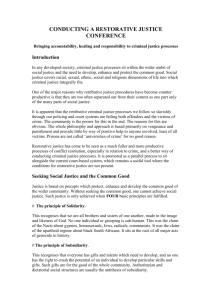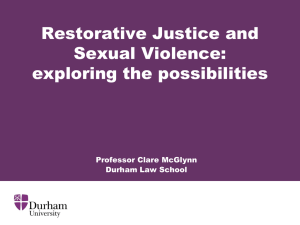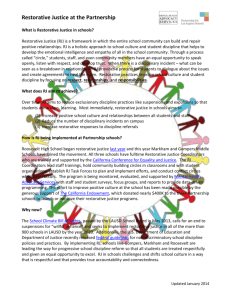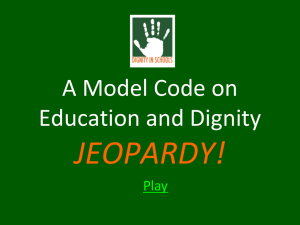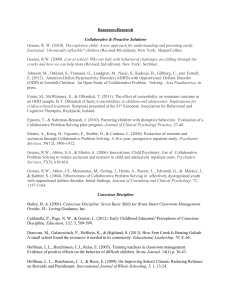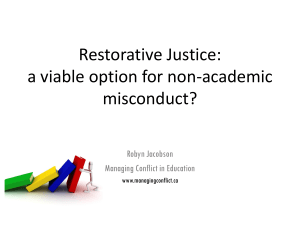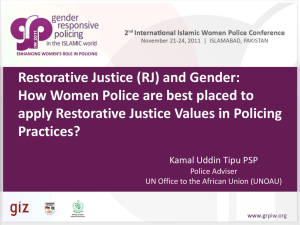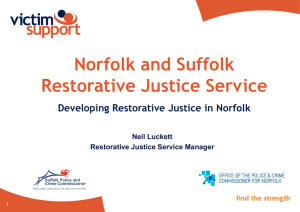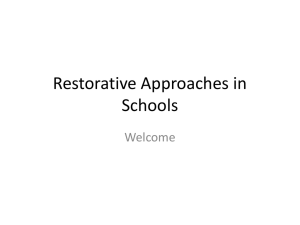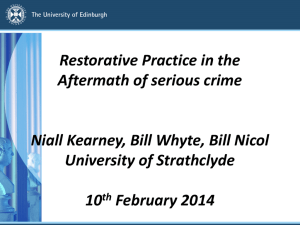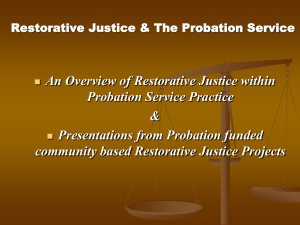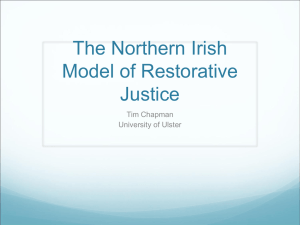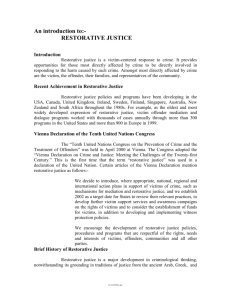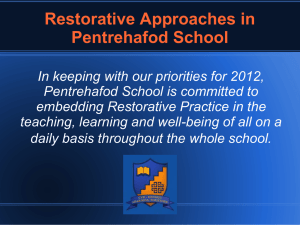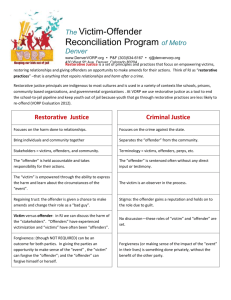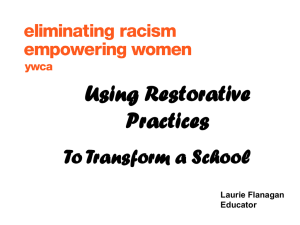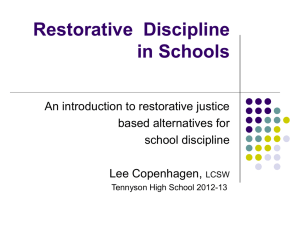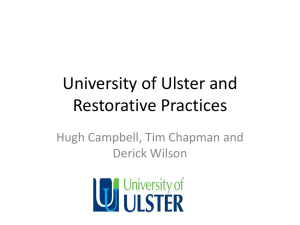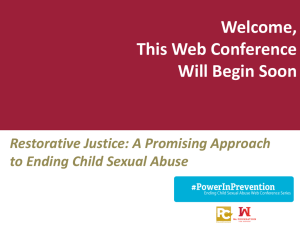Restorative Justice - MiddLab
advertisement
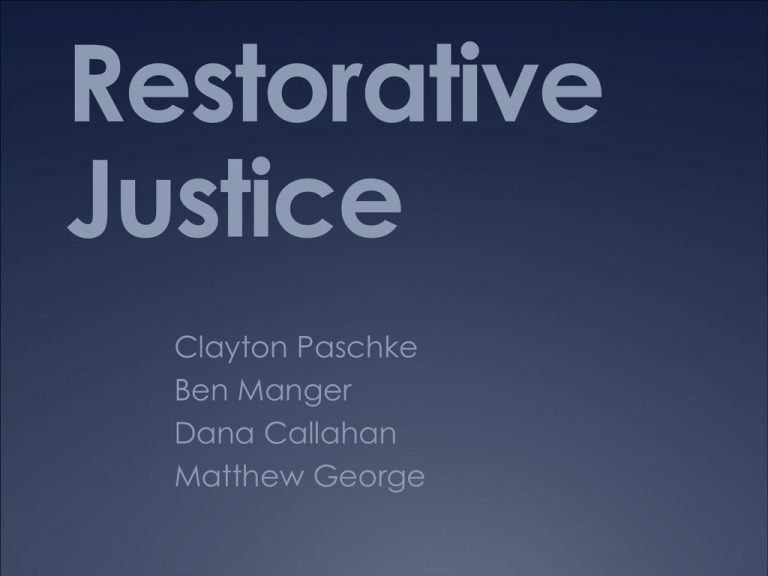
Restorative Justice Clayton Paschke Ben Manger Dana Callahan Matthew George Three Different Questions (Zehr) Criminal Justice What laws have been broken? Who did it? What do they deserve? Restorative Justice Who has been hurt? What are their needs? Whose obligations are these? Principles of Restorative Justice 1. Crime is a violation of people and interpersonal relationships 2. Violations create obligations 3. The central obligation is to put right to wrongs Restorative Justice Process Victim, Offender, and Community ideally meet Panel Face to face meetings Proximity meetings Victim/offender conferences Family group conferences Circles THE GOAL: Complete a restorative contract that heals as much harm as possible History of Restorative Justice in Vermont 1980s: Beginning of community- centered movement in VT 1995: Reparative probation program origins Role of the VT Department of Corrections Vermont Restorative Justice Now 12 active Community Justice Centers 72 reparative boards 45 towns 500 + volunteers Success in Vermont Criminals on reparative probation (1998- 2005): 23% less likely to commit a crime on probation 12% less likely to commit a crime following probation. Offender re-entry efforts Department of Justice grant Healing Victims •TSW Report (2008): Those who process reports of sexual assault should take a more victim-oriented approach. •HRC Report (2006) Recommendation #3: Train human relations advisers to provide support to persons who experience harassment. Offender Accountability Strategic Plan (2006) Recommendation #26: Encourage a culture of collaboration. MC Mission Statement: “We strive […] to cultivate the intellectual, creative, physical, ethical, and social qualities essential for leadership in a rapidly changing global community.” Community Involvement Strategic Plan (2006) Recommendation #27: Cultivate and support creativity and innovation. Strategic Plan (2006) Recommendation #30: “Strengthen internal communication, and make sure that all constituents within the Middlebury community feel connected and aware of the matters that affect them.” College Handbook: “Middlebury College recognizes its obligation to promote the welfare of the College community as a whole.” Restorative Justice and Higher Education Restorative justice is particularly useful for colleges and universities: Small, Close knit communities Sensitive relationships with “outside” towns and cities Different groups with different needs of a judicial system: Faculty, staff, students, community members Skidmore College One of the first successful, truly restorative programs at a liberal arts college in the United States Restorative conferencing approach used in order to facilitate communication between the offender, victim and community. Goal driven restorative contracts used to “correct the harm”. Tailored and individual contracts are made in order to prevent generalized community service that is meaningless to the offense committed. University of Colorado, Boulder Over 400 instances per year where academic or community discipline is needed Restorative group approach to dealing with conflict Restorative contracts made with administrative, community, and student input. Standardized contracts using pre-established norms for certain offenses. This is a necessity in the larger UC Boulder system


